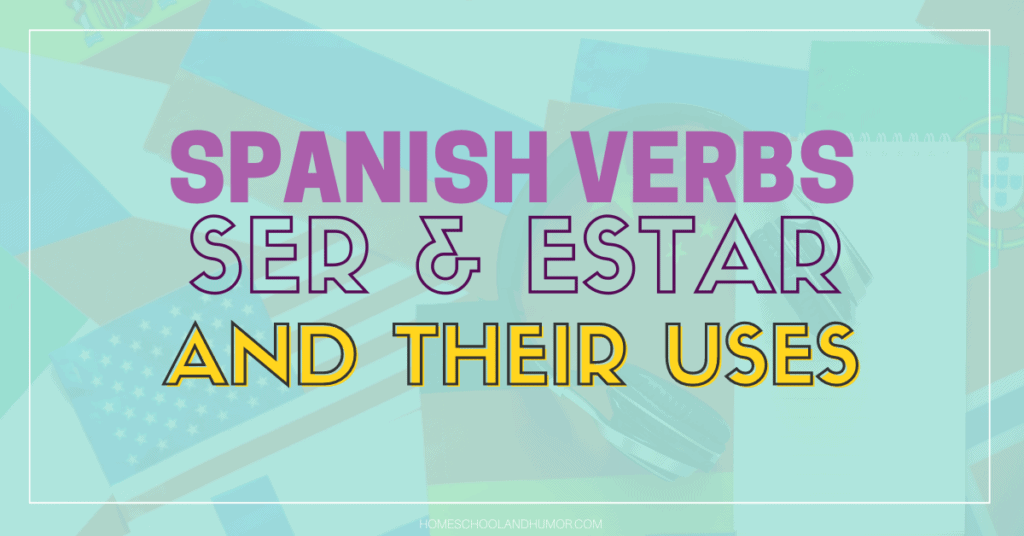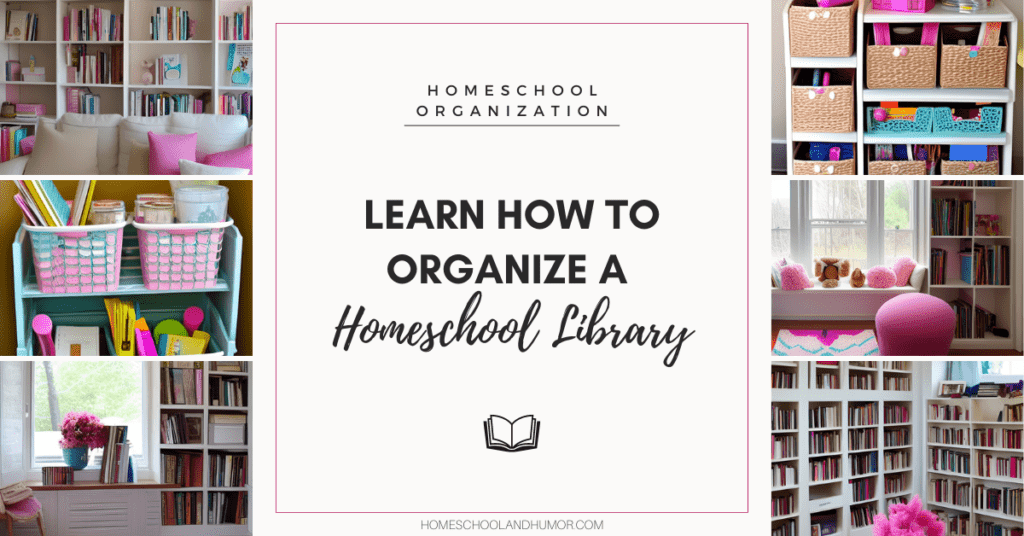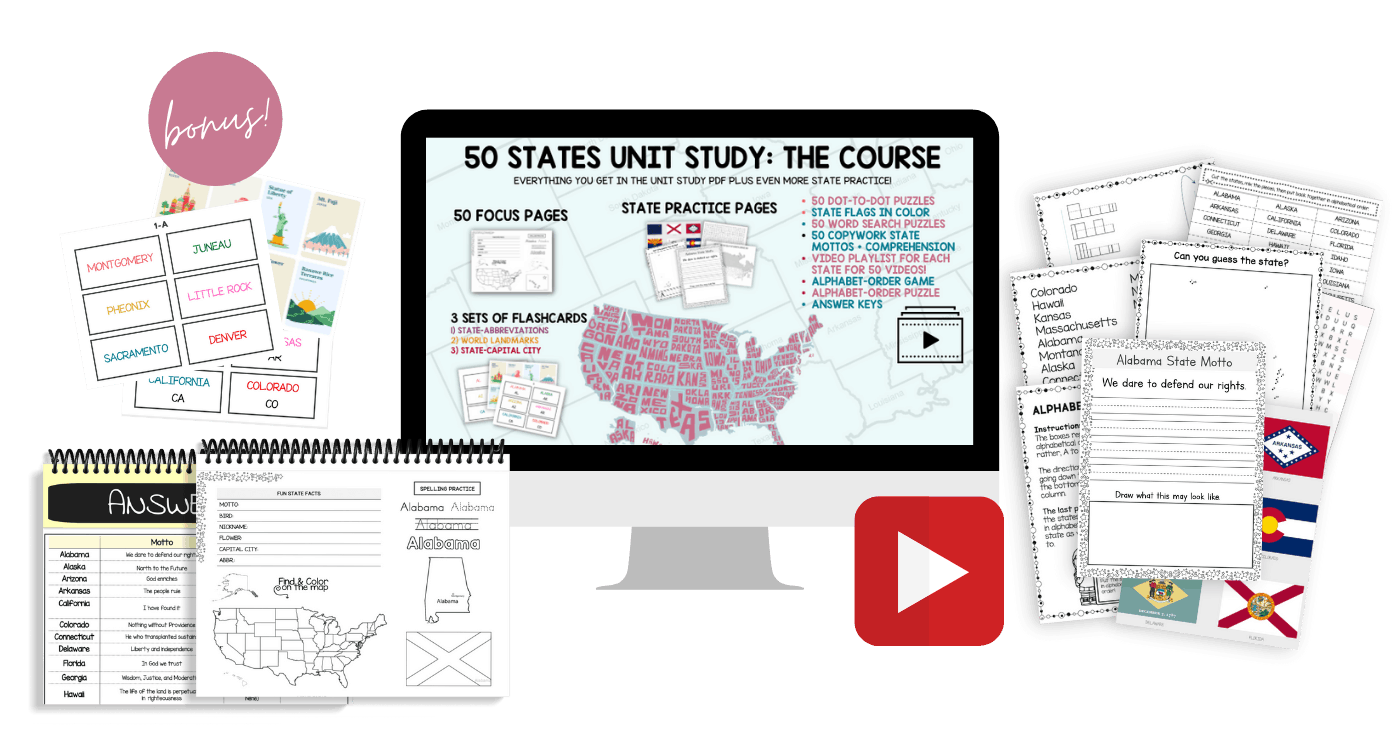When it comes to learning a foreign language, the best way is to have language notes to refer to in your learning process. Language learners spend a large amount of times studying their target language, so what better way to learn new vocabulary from different languages than with a language learning notebook setup for each child? Now there are tons of different types of notebooks as well as sections that you can put together. Let’s jump into how to organize a foreign language notebook and why it’s a great idea to use one to learn new words!
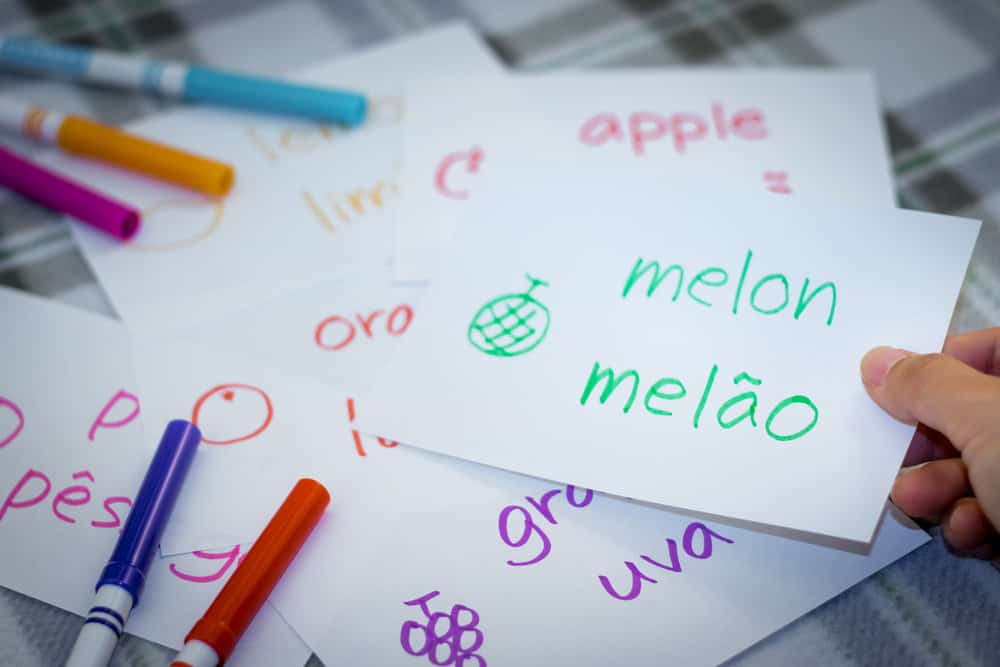
Disclaimer: This post may contain affiliate links for your convenience. See our disclosures here.
Quick Navigation
How to organize a language learning notebook
When you’re looking at how to keep a language notebook, ultimately it really depends on the age of the kids. Because you aren’t going to prep a foreign language notebook for a preschooler the same way as a high schooler, right? (I hope not.) But regardless of what age child you have that you’re setting up a foreign language notebook for, you can follow each of these tips for each child. Just customize it according to age!
Decide what type of notebook you want.
Before you do anything, you need to have some idea of what you’ll be using your new notebook for. As I mentioned, there are tons of different ways to learn how to organize a language learning notebook.
One way is to use it as a language journal. This is great for language learners because it allows you to track progress in the language and record new words or phrases that you or your child has learned. They can also use it to practice writing out sentences in the foreign language as their journal. It could be a great way to start off with example sentences and then continue through as you learn.
Or just write song lyrics in your foreign language, which is kind of like when you learn a guitar – just start off with what you may already be familiar with! That’s what I did when I went to learn how to play.
Another option is to use it as a vocabulary notebook. Here, you can write down all of the new individual words and word combinations that you have learned. You can then organize them into different categories so that you can easily reference them later. For example, if you have a list of all the food-related words, you could put them in one section and keep a separate section for verbs.
Notebooks are especially helpful for visual learners, but you can hit all learning styles with a notebook like this. It’s quite an effective way, if not the easiest way, to learn and study a foreign language on a regular basis. You’ll always have this notebook throughout your language learning journey to reference time and time again!
After you know what your language study will be, determine how often you’ll be using it. It can be served as a daily journal, where you or your kids can use it as an effective language learning study plan or starting point at the beginning of each lesson.
You can do a little bit every single day and make it part of your daily routine, which is also good to maintain a clear vision of the new alphabet and help with short-term memory for family members.
1. Start with a blank page for each topic.
Starting with a blank page for each subject keeps you organized and focused. It allows you to clearly direct your thoughts in the direction of the chosen topic, ensuring that all of your energy is being directed into understanding the new material.
It also facilitates quick recall as it’s easier to remember on a blank page than sifting through pages full of notes. This technique can be especially helpful when learning concepts or completing assignments with many detailed steps.
By capturing each bit of information separately, learners can move through the body of work at their own pace and oftentimes in more depth than they would have otherwise, believe or not!
2. Number every page in your notebook before you begin.
When you’re looking at how to organize a foreign language notebook, and to make sure you are organized and that things don’t get lost, number every page in your notebook before you start. When you have a page number indicated, you’ll know how far you are and where other things are related to the numbers.
Adding page numbers will also help you keep track of how far you have come, how many pages you have written, and how much more material there is to be covered.
You’ll be able to reference old notes quickly, which could be helpful when you want to practice how to write something in particular during your study time. It might take a few moments, initially, but the time saved will far outweigh even the small initial effort, so be sure to label your notebook this way!
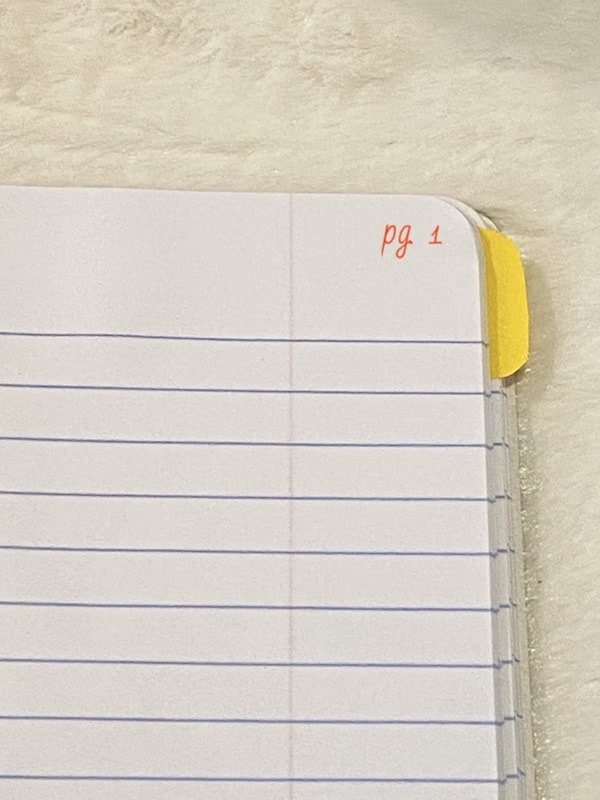
3. Create an Alphabet Chart.
Write out the alphabet for the foreign language in your notebook, so you can refer to it when trying to spell or pronounce words. Learning a foreign language can often seem overwhelming, but having your own personal alphabet chart can make it easier to learn and become confident in speaking.
By writing out the entire alphabet of the language you are learning in your notebook, you will have a reliable and convenient reference point when trying to remember how to spell or pronounce words. Not only does this help one memorize vocabulary better, but it also builds confidence and encourages continued learning in a foreign tongue.
Creating an alphabet chart is an effective method of practicing language fundamentals, so give it a try! And it doesn’t matter what alphabet it is, the Latin alphabet or Chinese characters, having the chart right there to see is the most effective way to say the right words and solve common problems when learning a foreign language!
4. Create an ongoing table of contents in the beginning pages of your notebook.
Creating a table of contents helps to organize your notes and makes finding material easier. When studying a foreign language, there is often a lot of content to stay on top of. Having an organized table of contents will help you locate the different topics quickly and easily, and will be a good place to start when learning how to organize a language learning notebook.
Listing the different sections in order can also make it easier to review material and remember how different concepts are related. This is especially true when studying a language with multiple verb conjugations or other similar concepts.
By writing out the table of contents as you go, you can also ensure that everything is in the right order and nothing gets lost in translation! Just each time you start on a new topic or subtopic, add it to the Table of Contents!
5. Label sections according to what you’ll be learning.
Labelling sections in your notebook boosts your language learning. If you have the concepts or topics you will be learning, make sections for each one. For example, you can:
ABC Glossary Index
Make an ABC section in the back of your notebook with the last few pages (like count 5-10 pages of the last few pages) to be an ABC glossary index. Here, you can write the words that began with that letter and come back to this section often when you hear or study a new word – just add it to whichever letter it starts with.
How to organize a foreign language notebook with precision may depend on the age group, but this glossary is on point for every age group!!
This is a good section to add phrases you hear often, words that you can’t remember how to spell, or just everyday phrases like how to say “hello” and “goodbye”.
By organizing your notebook in this way, it will be much easier for you to find what you are looking for and even better – you don’t have to write down every word or phrase again and again. Unless, of course, you’re studying the language using a spiral approach.
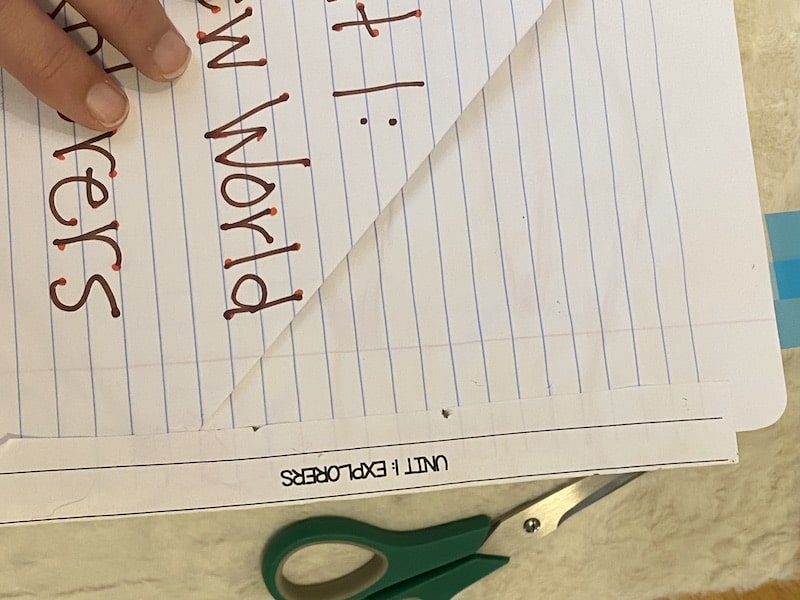
Vocabulary
You can also divide your notebook into sections that focus on specific topics such as animals, plants, weather and other everyday items. Keeping different vocabulary topics within their own dedicated sections makes it easier to focus and recall them more efficiently.
As opposed to having an undifferentiated ‘vocabulary’ section of words, you can divide your notebook up into specific categories. This way, when you are taking a quiz or reviewing, it is much easier to find the words that are relevant to your current language level.
Grammar
In addition to labelling sections in your notebook for the vocabulary words you will be learning, you can also create other sections, such as grammar and common phrases. These will help you structure your language learning, by offering ready reference points when it comes to how to conjugate verbs or how to construct basic sentences.
Use this grammar section to take notes as you learn the grammar usage of the language, how the order of words should be used in a sentence, how to conjugate verbs and how to use common phrases.
Writing
You create a writing section in your notebook to practice how to write sentences and phrases in the foreign language. Writing is an essential part of learning a new language, as it allows you to internalize what you have learned, so don’t be afraid to make mistakes when practicing how to write in the new language.
Writing out words and phrases helps with retention, so use this section to practice how to write what you’ve learned. Start with simple words and work your way up, testing yourself each step of the way as you progress.
6. Use Color-Coding.
Using colors to differentiate topics within your notebook can make them easier to identify and recall. Visual cues such as color-coding help organize information for more efficient learning, so try using colored pens or markers to highlight the important elements in each section.
Highlight keywords, phrases, or grammar rules that you want to remember. Colorful highlighting pens make it easier to spot key items when you’re flipping through your notebook.
Color-coding is an effective way of differentiating and highlighting key points within each section of your notebook. This way, when you are reviewing the material or quizzing yourself, it will be easier to find the relevant information.
You could also have one color in your first language, like English, and then another color in the language you are learning, so you can clearly see how each language is different.
Bright colors and simple patterns can also make learning more fun and engaging, so don’t forget to have some fun with it! For example, you can have one color for nouns, another for adjectives and a third for verbs. By using this technique, you will be able to quickly recall vocabulary words and other language concepts with greater ease.
7. Use Examples and Visuals To Enhance Your Learning Experience
Incorporating visuals and examples into the material in your notebook can make learning and retaining information much easier. For example, including pictures of animals next to the words for them in your notebook can help you learn how to identify and remember them better.
You could also jot down helpful phrases with visual cues, such as how to introduce yourself or how to ask a question. This will make it easier to recall how to say things in the language and will make your learning experience more enjoyable.
Visuals are an effective way of memorizing information, so try incorporating them into your notebook today!
8. Leave space around the page and sides to add details.
When you are taking notes, be sure to leave enough space on the page and around the sides of your notebook as well as the margins for extra details. This way, when you come back to review what you have learned, it will be easier to find the extra information that was added later on.
It’s also helpful to add additional notes or comments that can help you along the way. This extra space allows for more room to make connections with what you’ve learned and how it applies to real life scenarios.
By leaving enough space for extra information, you will be able to expand on the material in your notebook as your language knowledge grows. With this extra space, you will be able to make even further connections and gain a better understanding of how the language works.
Try writing these extra details in a different color, too, so you can easily identify them. This way, when you come back to review the material, these notes will help remind you of how far you have come and how much more there is to learn.
9. Consider adding templates to make it more fun!
Interactive notebooks are super fun for any subject – I’m a huge fan of them! You can make a foreign language notebook much more engaging for your kids by adding templates.
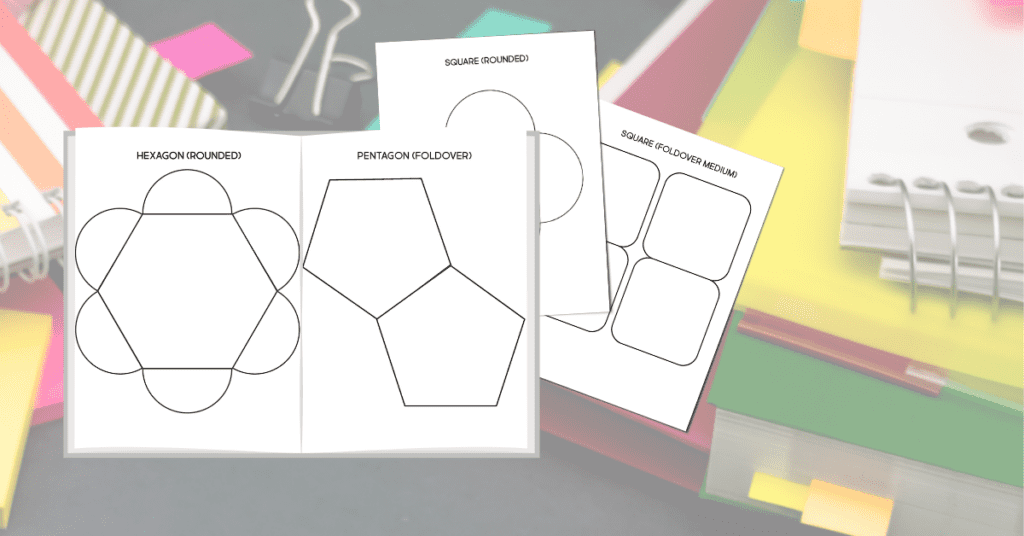
There are lots of ways to add templates to your notebooks, such as creating tables, fill-in-the-blank sections, using cut-out flowers and shapes, and even stickers, and much more!
These templates will help make learning how to organize a language learning notebook a more exciting and enjoyable experience. Your kids will be motivated to learn. This way, you can make sure that you are understanding everything and actively engaging with the material with the language learning notebook.

You can also use templates to quiz yourself in order to reinforce the information that you have learned. Having fun with how you organize your notebook will help you stay motivated and increase the chances of you actually retaining what you learn in the long run.
Are you ready to start making foreign language learning fun? Grab free interactive templates here!
10. Draw Mind Maps Inside Your Notebook
Drawing mind maps of how words relate to each other in a foreign language is another effective way to learn how to organize a language learning notebook and express yourself in a new language.
You can use the space in your notebook to draw out how different words, phrases, and expressions are related. For example, how one verb is used when expressing an action or how different adjectives are related to colors.
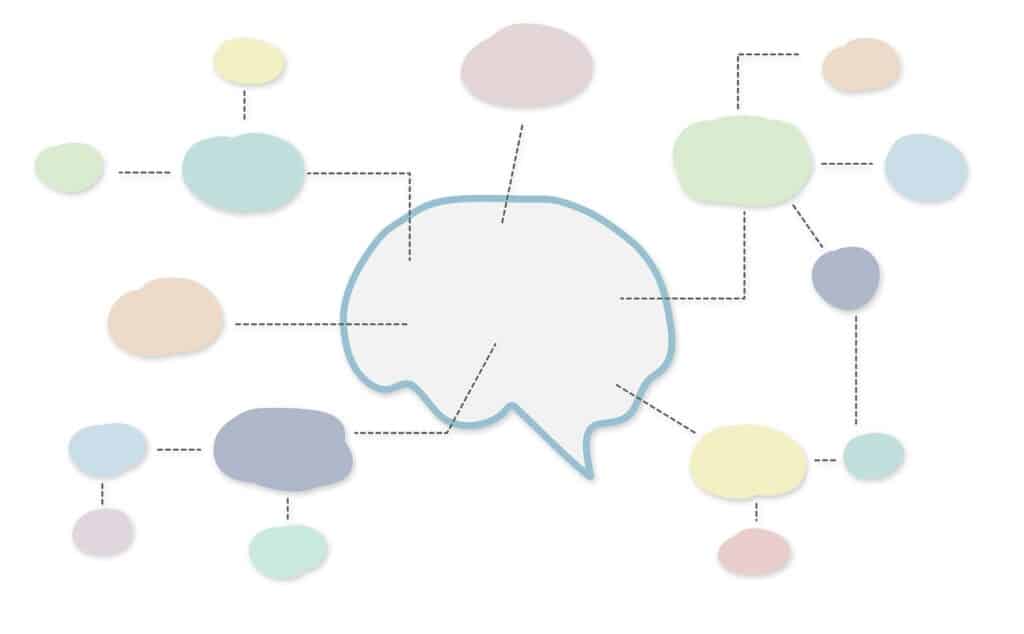
By visually mapping how these words are related, you’ll be able to remember how they work together much easier. This can help you understand how to put your words together in meaningful ways.
Mind maps are also great for reinforcing how words work together and how they can be used to create conversations in the language. This way, you’ll be able to express yourself with more confidence and fluidity in foreign languages.
How To Organize A Foreign Language Notebook For Homeschool Peeps
Organizing your foreign language learning notebook setup is not only useful but it can also make learning a foreign language much easier and more enjoyable. By breaking your notes down into categories, you will have an easier time accessing the information as you need it, and soon enough you’ll be speaking the new language with ease.

- 111 Best All-Time Middle School Movies List (In Categories!) - April 26, 2024
- Top 16 Indoor Games for Teens That Won’t Turn Your House into a War Zone - January 29, 2024
- Free Crafty Printable Christmas Countdown Calendars For Kids - December 17, 2023






